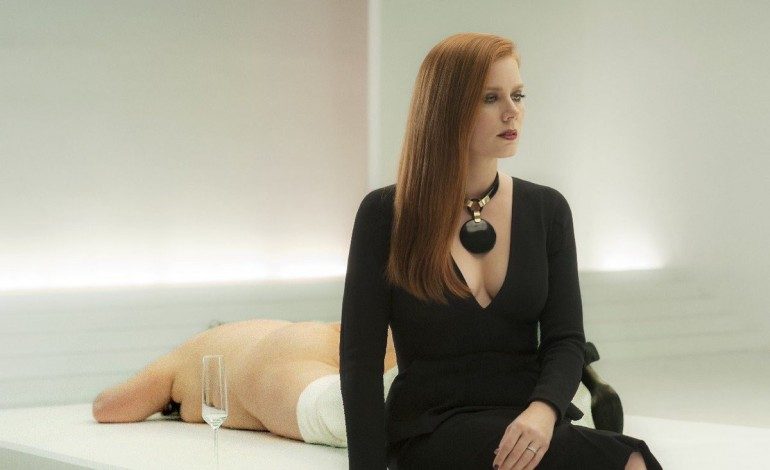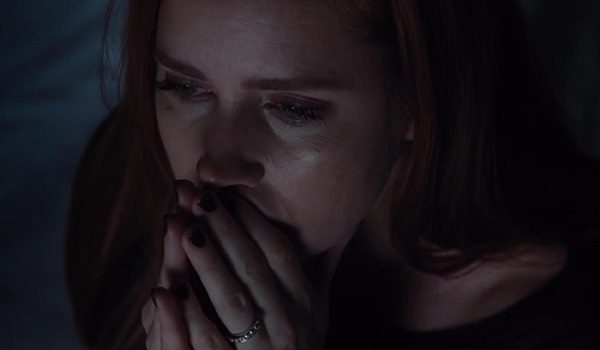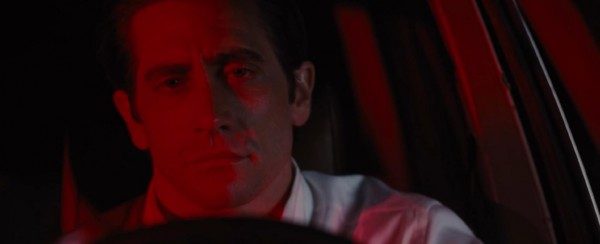

Tom Ford has created a beautiful car crash of a film – emphasis on both descriptors. Nocturnal Animals is edging disaster, but Ford makes it impossible to look away. Violent, grotesque, yet ultra-stylish and stunning, Ford once again defies expectation. Even so, some of his plot tends toward the incoherent and absurd – finding a tricky balance somewhere between Eyes Wide Shut and No Country for Old Men – and would leave its audience dumbfounded if not for his unfailing innovative style and powerhouse performances from Amy Adams, Michael Shannon, and Jake Gyllenhaal.
Sure, there is some narrative and thematic coherency to be found in Nocturnal Animals if you look hard enough, but Ford’s attempt at provocation has him skirting the edge of novelty filmmaking. Take the ambitious plot for instance: it follows Susan (Amy Adams), a rich and stoic gallery owner in the Los Angeles art scene who seems to have hit a standstill in her externally perfect life filled with lavish parties, an over-worked, yet dashing husband (Armie Hammer) who is secretly cheating on her, and the pinnacle of a privileged lifestyle. Still, she has become hardened by it all, and when her ex-husband Edward (Gyllenhaal) sends the manuscript to his novel, – which he has dedicated to her – his story awakens something in her as she begins to re-evaluate their past.
The plot then filters in and out of Susan’s reality and the world of the story. A violent thriller titled ‘Nocturnal Animals’, Edward’s novel tells of a timid man who goes on a mission of revenge with the help of a local police investigator (Shannon) after losing his wife (Isla Fisher) and child to careless murderers on a dark Texas highway. Ford’s story-within-a-story is near brilliant if not for the fact that it struggles to say anything of value about Susan’s arc. Edward’s novel is a classic story of revenge, told within the context of a modern western. It is violent and blossoms within the chaos of its setting. There are few direct parallels to be drawn with Susan’s plot, however, and her connection to Edward’s story will have audiences grasping at air.
Character is an especially murky area in this film. Ford makes it unclear who in the fictional ‘Nocturnal Animals’ story Susan is meant to represent, if anyone at all. Sometimes she is the murderers (including a spectacular Aaron Taylor Johnson), sometimes she is the victimized husband Tony (also portrayed by Gyllenhaal), but the story does not allow either her or the audience to reach a conclusion. And who exactly is Edward in all of this? Is he just Edward; is he Tony; is he both or neither? The audience basically only sees Gyllenhaal as Tony or Edward in the past, making his reality completely vague. Perhaps both of these things are wholly intentional, Ford trying to make a statement about applying meaning to art, but the effect is disjointed.
The score, by Abel Korzeniowski (my favorite part of the film), is the story’s great unifier, fixating the audience on the action of the story through its contrasting and mesmerizing strains. The violent and passionate thriller plot is scored with patiently melodic bars, contrasting the scenes with feelings of an intimately calm pastoral. On the other hand, Susan’s severe and cold atmosphere is characterized by a more urgent orchestral score, being at times the sole indicator of emotion.
Ford’s compelling score has an outstanding complement in his stylistic choices. While this is likely expected from the designer-turned-director, he definitely does not disappoint. Ford implements an aesthetic of modern style meets old-world sensibility. The Hollywood-set half of the film balances elegant modern fashion with the severe and gaudy, making a statement about the effects of errant affluence. The world of Edward’s novel is classic in its rural simplicity and desolation, allowing the drama to take center stage. As with the contrasting score, Ford’s visual styles play up each story’s opposites, with Susan’s world being aesthetically thrilling and narratively barren, and vice versa for Edward’s novel.
One particular facet that blends in effortlessly with the rustic aesthetic is Michael Shannon’s portrayal of the police detective Bobby Andes. Playing a fictional character created by a fictional character was probably a lot for him (or anyone) to wrap his head around creatively, but Shannon disappears into the role, turning out his own version of a hard knocks Tommy Lee Jones persona and surrendering skillfully into his classic character type. Gyllenhaal likewise does a noteworthy transformation act between Edward and Tony, making their similarities and differences apparent while staying locked within their separate characters. For Adams, she had one of the heaviest tasks at hand, creating emotion and intrigue out of her externally cold character, then transitioning to a softer pre-divorce Susan, and finally making visual connections between Susan and the narrative world she is not a part of. However, Adams does it all with precision and continues to prove the exponentially growing value behind her star power.
Verdict: 3 out of 5
Nocturnal Animals is visually and sonically spellbinding with equally enthralling performances from its top-bill actors. Ford, however, slightly relies on the talent and his secondary creative elements a bit too heavily to tell a story ultimately shallow in its thematic and narrative output. Regardless, its beauty and absurd elements will likely draw a significant fanbase out of the art house crowd, and Ford will maintain his reputation as a visual provocateur.



